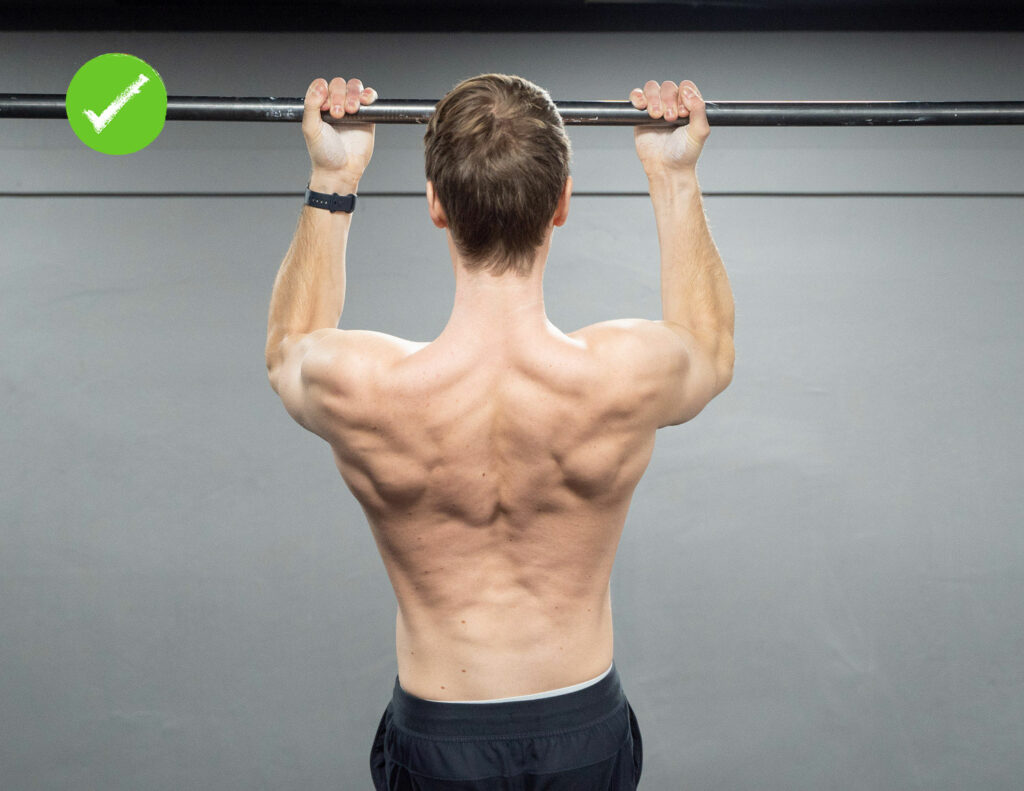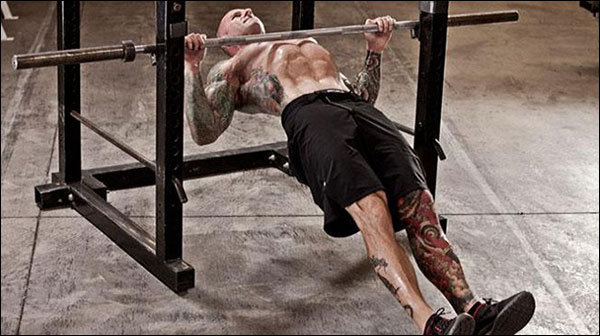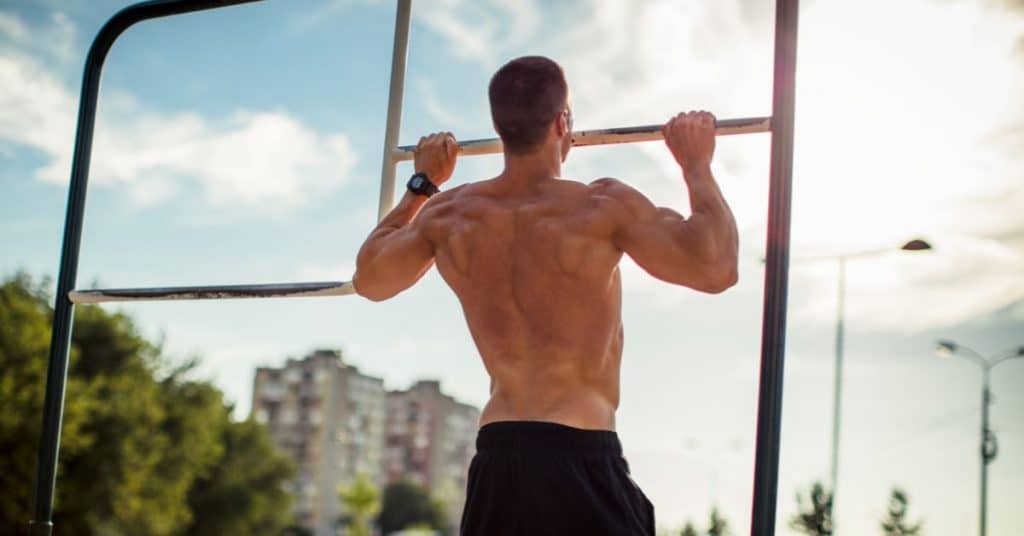Introduction to Calisthenics:
Calisthenics is a form of strength training that includes using your body weight for exercise. It improves coordination, muscle control, endurance and mobility.
In this blog, we’ll talk about Calisthenics Pull Workout. If you are new to the world of Calisthenics then Check Out: Calisthenics for Beginners
Understanding Pull Exercises:
In the realm of comprehensive calisthenics routines, Including pull workouts in your daily exercise regimen is very important. By infusing your training regimen with pull exercises, you can get a lot of advantages, including amplified upper body strength and muscular development to elevated functional fitness levels. In this blog post, we shall embark on an exploration of the vital role that pull exercises play in the realm of calisthenics, shedding light on the array of benefits that arise from their integration into your routine.
The Significance of Pull Exercises in Calisthenics:
At the core of calisthenics training lie pull exercises, including pull-ups, chin-ups, and inverted rows. These exercises predominantly target the musculature of the back, arms, and shoulders, fostering the cultivation of a well-rounded physique. Termed “Pull Workouts,” these exercises involve the act of pulling your body weight toward a fixed point. Engaging in these movements not only poses a challenge to your muscles but also elevates your overall physical health and endurance.
The Incorporation of Pull Workouts in your Calisthenics Routine:
The integration of pull workouts into your calisthenics routine has a lot of benefits. Let us delve into several advantages:
1. Enhanced Muscular Development:
Calisthenics pull exercises reign supreme in their efficacy to gain muscle mass and fortify upper body strength. The repetitive contractions of the back muscles, including the latissimus dorsi (commonly known as “lats”), culminate in the sculpting of a well-defined physique. Moreover, pull workouts engage the biceps, forearms, and an assortment of stabilizer muscles, ensuring a harmonious development of musculature.
2. Increased Functionality:
Among the primary aspirations of calisthenics lies the augmentation of functional strength—strength that seamlessly transcends into everyday practical movements. Pull exercises faithfully mimic actions like scaling heights, lifting objects, and tugging, thereby rendering them inherently functional. Through the incorporation of pull workouts in your routine, you cultivate the power and vigour required for real-life endeavours.
3. Improved Posture:
The prevalence of sedentary lifestyles and prolonged hours spent in seated positions often give rise to compromised posture among many individuals. Calisthenics pull exercises come to the rescue, bolstering the muscles responsible for maintaining proper posture, such as the rhomboids and mid-back muscles. As these muscles grow robust, they collaborate in retracting the shoulders and expanding the chest, fostering an upright posture while mitigating the risk of postural imbalances.
4. Amplified Grip Strength:
Pull workouts place substantial reliance on grip strength to grasp bars, handles, or rings. As you progress in your calisthenics pull workout routine, your grip strength experiences a natural augmentation. This bolstered grip strength yields practical benefits across various activities, encompassing the ability to carry heavy objects or execute manual tasks that demand a firm grasp.
People Also Read: Calisthenics Push Workout: Get Ripped Without Weights!
The Basics of Calisthenics Pull Exercises:
In any calisthenics pull workout, it’s essential to understand the foundational exercises that form the basis of this training approach. Here are three key pull exercises commonly incorporated:
Pull-ups:
Pull-ups are a classic and challenging exercise that targets various muscles in the upper body. They involve hanging from a bar with an overhand grip and pulling your body upward until your chin clears the bar. Pull-ups primarily engage the latissimus dorsi (lats), biceps, and the muscles of the upper back.
Chin-ups:

Similar to pull-ups, chin-ups are performed by gripping the bar with an underhand grip, palms facing towards you. By pulling your body up until your chin passes the bar, chin-ups primarily work the biceps, lats, and other muscles of the back. They provide a slightly different stimulus compared to pull-ups, emphasizing the biceps to a greater extent.
Inverted Rows:

Inverted rows are performed using a horizontal bar or suspension trainer. By lying underneath the bar with your feet on the ground and gripping the bar with an overhand grip, you pull your body upward until your chest touches the bar. Inverted rows target the muscles of the back, including the lats, rhomboids, and rear deltoids, while also engaging the biceps and forearms.
Emphasizing the Use of Bodyweight for Resistance:
One of the defining aspects of calisthenics pull exercises is the use of body weight as resistance. Unlike traditional weightlifting, which often involves external weights, calisthenics relies solely on your body’s weight to provide resistance. This aspect makes calisthenics pull workouts accessible to individuals of various fitness levels, as the resistance can be adjusted by modifying leverage or performing different variations of the exercises.
Importance of Proper Form and Technique:
To maximize the effectiveness of your calisthenics pull workout and minimize the risk of injury, proper form and technique are paramount. Paying attention to the following factors is crucial:
Alignment:
Maintain proper alignment throughout each exercise. Keep your body straight, engage your core, and avoid excessive swinging or kipping movements.
Full Range of Motion:
Aim for a full range of motion in each repetition, ensuring that you fully extend your arms at the bottom and bring your chin above the bar in pull-ups and chin-ups.
Controlled Movements:
Perform the exercises in a controlled manner, focusing on the muscles being targeted. Avoid relying solely on momentum to complete the movements.
Structuring Your Calisthenics Pull Workout:
Setting Goals and Determining Sets and Repetitions:
When designing your calisthenics pull workout, it’s essential to set specific goals and determine the appropriate number of sets and repetitions to achieve those goals. Consider the following:
Goals:
Identify what you aim to achieve through your calisthenics pull workout. Whether it’s increasing strength, building muscle, or improving overall fitness, setting clear goals will help guide your training.
Sets and Repetitions:
The number of sets and repetitions will depend on your fitness level and goals. Beginners may start with 2-3 sets of 8-10 repetitions per exercise, while more advanced practitioners can perform 3-5 sets of 10-15 repetitions. Adjust the volume and intensity as needed to maintain proper form and challenge yourself.
Incorporating Progressions and Variations:
To continue progressing and challenging your muscles in your calisthenics pull workout, it’s crucial to incorporate progressions and variations. Here’s how:
Progressions:
As you become stronger and more proficient, progress to more challenging variations of pull exercises. For example, you can start with assisted pull-ups using bands or a partner and gradually decrease assistance until you can perform unassisted pull-ups. Other progressions include weighted pull-ups, one-arm pull-ups, or explosive variations like clapping pull-ups.
Variations:
Incorporating variations helps target different muscles and prevents plateaus. Experiment with wide-grip pull-ups, close-grip chin-ups, commando pull-ups, or archer pull-ups. Varying grip width, hand placement, or using different equipment like rings or a TRX suspension trainer can also add diversity to your workout.
Sample Pull Workout Routines:
Here are sample best pull calisthenics workout routines for different levels of practitioners:
Beginners:
Assisted Pull-Ups: 2 sets of 8-10 repetitions
Inverted Rows: 2 sets of 10-12 repetitions
Chin-Ups: 2 sets of 8-10 repetitions
Intermediate:
Pull-Ups: 3 sets of 10-12 repetitions
Wide-Grip Pull-Ups: 3 sets of 8-10 repetitions
Inverted Rows: 3 sets of 12-15 repetitions
Advanced:
One-Arm Pull-Ups: 4 sets of 6-8 repetitions per arm
L-Sit Pull-Ups: 4 sets of 8-10 repetitions
Weighted Pull-Ups: 4 sets of 8-10 repetitions with added weight
Common Mistakes to Avoid:
Incorrect Grip and Hand Placement: Proper grip and hand placement are crucial in performing calisthenics pull exercises effectively and safely. Avoid the following mistakes:
Grip Mistakes: Avoid using a grip that is too wide or too narrow for your comfort and ability. An excessively wide grip can strain the shoulders, while a narrow grip may limit your range of motion and engagement of target muscles.
Hand Placement: Ensure that your hands are positioned evenly on the bar or handles, maintaining a firm and secure grip. Uneven hand placement can lead to imbalances and potential injuries.
Overtraining and Lack of Rest: While enthusiasm is admirable, overtraining and lack of rest can hinder progress and increase the risk of injury. Consider the following:
Rest Days: Allow sufficient rest and recovery between calisthenics pull workouts. Muscles need time to repair and grow stronger. Aim for at least one to two days of rest per week to prevent overuse injuries and optimize performance.
Progressive Overload: Instead of constantly pushing for maximum effort every workout, implement a progressive overload approach. Gradually increase the intensity, volume, or difficulty of exercises over time, allowing your body to adapt and grow stronger while minimizing the risk of overtraining.
Neglecting the Importance of Scapular Retraction and Depression:
Proper scapular retraction and depression are vital for engaging the correct muscles and maximizing the effectiveness of calisthenics pull exercises. Avoid these mistakes:
Lack of Scapular Retraction: During pull exercises, focus on retracting your scapulae (shoulder blades) by squeezing them together. This engages the muscles of the upper back and promotes proper posture.
Neglecting Scapular Depression: Along with retraction, scapular depression involves actively pulling the shoulder blades downward. This helps engage the muscles of the lower traps and lats, enhancing the effectiveness of the pull exercises.
By paying attention to grip and hand placement, ensuring adequate rest, and prioritizing scapular retraction and depression, you can avoid common mistakes and optimize the benefits of your calisthenics pull exercises.
Conclusion:
The profound influence of integrating calisthenics pull exercises into your workout regimen cannot be overstated. By comprehending the significance of proper form, employing a diverse range of variations and progressions, and evading common errors, you can optimize the advantages derived from your calisthenics pull workouts.
Calisthenics pull exercises, encompassing pull-ups, chin-ups, and inverted rows, effectively engage numerous muscles in the upper body, fostering muscle growth, functional prowess, enhanced posture, and heightened grip strength. These exercises rely on body weight as resistance, rendering them accessible to individuals across varying fitness levels.
Establishing well-defined objectives, ascertaining suitable sets and repetitions, and incorporating progressive elements tailored to your fitness level is pivotal in structuring an efficacious calisthenics pull workout. Regardless of whether you are a novice, intermediate, or advanced practitioner, there exist exemplary routines to assist you with your fitness odyssey.
Hello, fellow fitness enthusiasts! I'm Zayn, a Board Certified Fitness and Nutrition Coach. My journey started from a personal commitment to fitness, and over time, this passion ignited a desire to help others unlock their potential. I transformed this passion into my profession, and today, I'm proud to say that I am armed with a plethora of certifications, all testament to my dedication and commitment.
When I'm not advising clients or working on my next blog post, you'll find me trying out new fitness regimes, diving into the latest nutritional research, or practicing what I preach with my own healthy lifestyle. My mission is to help you become the best version of yourself, showing that fitness and nutrition are as much about the journey as they are about the destination.


